Indus Valley Civilization Far Ahead Of Its Time Has Baffled Scientists For Centuries
A. Sutherland - AncientPages.com - According to ancient Indian epics and esoteric doctrine, Harappa and Mohenjo-Daro were two of the Seven Rishi Cities of the Rama Empire. Archaeologists and historians estimate the Indus Valley civilization might be much older than previously thought.
Based on recent discoveries, there is reason to think the Indus Valley civilization may be at least 8,000 years old and this would also mean the Indus Valley civilization pre-dates Egypt’s pharaohs and Mesopotamia is often mentioned as the cradle of human civilization.
The Indus Valley civilization is one of the greatest and the least known early civilizations of the Old World.
For hundreds of years, the Indus Valley civilization has troubled the world of archaeology and perhaps the only chance to learn the secrets of these people is to decipher the Indus script.
Some of these secrets we already know. Harappans’ technological achievements are still recognizable today.
Evidence shows that the Indus Valley people were both sophisticated and technologically advanced; they were very talented in many areas of science, technology, and engineering. They developed new techniques in metallurgy and the production of copper, bronze, lead, and tin was possible because Harappans were skilled metallurgists who used several techniques in their work.
The engineering skills of the Harappans were used in their impressive architecture. Their master engineers constructed dockyards, large warehouses, granaries, brick platforms, and protective walls, which most probably functioned as the protection against floods and possible military conflicts that could endanger the population.
Urban Planning Of Great Importance
Excellent knowledge of urban planning was of great importance for the people of the Indus Valley.
Evidence of that can be found in the remains of great cities such as Harappa, Mohenjo-Daro and the recently partially excavated Rakhigarhi, located in the valley of the prehistoric Drishadvati River ("She with many stones"), a river that confluences with the legendary Vedic river Saraswati; during the Vedic period.
Harappan engineers are credited with the world's first known urban sanitation systems. People used water from wells and could take a bath while wasting water was directed to covered drains, which lined the major streets.
Another marvelous achievement of Mohenjo-daro people was the advanced drainage system, “the like of which has not yet been found anywhere in the world in any other city of the same antiquity.” The drainage system and drains were covered with bricks or stones and were provided with inspection traps and main holes at regular intervals for inspection.
Every house had its own soak-pit which collected all the sediments and allowed only the water to flow into the street drain.
Archaeologists have found evidence of soaps, combs, and medicine used by the people. The elaborate drainage system of the Harappan people shows that hygiene, health, and sanitation were of great importance for them.
See also:
Mysterious Mohenjo Daro Was Home To An Unknown Advanced Civilization Far Ahead Of Its Time
Curious Ancient Copper Plates May Help Unravel The Mystery of Indus
How Did Indus Civilization Manage To Resist Climate Change?
Mysterious Rishis – Remarkable Ancient Sages And Scientists With Divine Knowledge In India
Accurate Measurements Of Length, Mass And Time
The people of the Indus Civilization were among the first to achieve great accuracy in measuring length, mass, and time. They were among the first to develop a system of uniform weights and measures.
Standard weights and measures were developed by the Indus Valley Civilization and they existed in multiples of a standard weight and in categories. Archaeologists unearthed precise weights that used the binary system.
Uniform units of length were used by engineers in the planning of towns such as Harappa, Mohenjo-daro, Lothal, and others.
Many Tools But Few Weapons
They used the metals to make a variety of tools but few weapons compared with other civilizations. They also demonstrated their talents by using other materials. The earliest forms of buttons were found in Mohenjo-Daro. These were made from seashells.
Good Knowledge Of Astronomy
Harappans had a good knowledge of astronomy, observed the sky, and used the gnomon, a sun stick for their measurements. The straight streets of their cities were oriented towards the cardinal directions, which assume astronomical observations.
Broken tablets and seals reveal evidence of the ‘Great Bear’ and the ‘Pleiades’ (in old Tamil: ‘Seven Stars’), a group of stars that played an important role and are mentioned in several Hindu myths. They were found depicted on some seals as seven human figures. Ancient Harappan scripts and later Vedic texts suggest that Harappan priest-astronomers tracked the progress of Mercury, Venus, and Saturn.
They probably observed all of the planets and mapped the sky. The Vedic Calendar, which was based on the movement of the planets and the stars, was used at this time.
Written by A. Sutherland - AncientPages.com Staff Writer
Copyright © AncientPages.com All rights reserved. This material may not be published, broadcast, rewritten or redistributed in whole or part without the express written permission of AncientPages.com
Expand for referencesRapson, E.J. Ancient India
More From Ancient Pages
-
 Mysterious Advanced Underground Civilization And A Secret Society – Astonishing Discovery And Connection – Part 1
Ancient Mysteries | Apr 21, 2018
Mysterious Advanced Underground Civilization And A Secret Society – Astonishing Discovery And Connection – Part 1
Ancient Mysteries | Apr 21, 2018 -
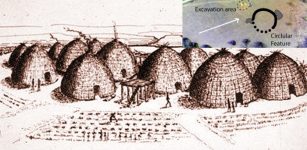 Large Earthwork At Wichita Site In Kansas – Is It Long-Lost Native American City Of Etzanoa?
Archaeology | Sep 4, 2020
Large Earthwork At Wichita Site In Kansas – Is It Long-Lost Native American City Of Etzanoa?
Archaeology | Sep 4, 2020 -
 Fairies Weren’t Always Cute – They Used To Drink Human Blood And Kidnap Children
Featured Stories | Oct 15, 2022
Fairies Weren’t Always Cute – They Used To Drink Human Blood And Kidnap Children
Featured Stories | Oct 15, 2022 -
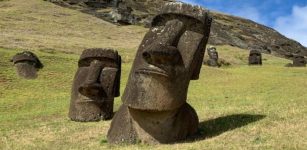 DNA Results Show: Polynesians, Native Americans Made Contact Before European Arrival
Archaeology | Jul 9, 2020
DNA Results Show: Polynesians, Native Americans Made Contact Before European Arrival
Archaeology | Jul 9, 2020 -
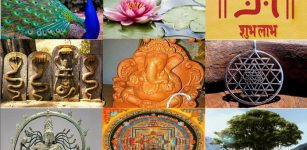 11 Ancient Sacred Indian Symbols Explained
Ancient Symbols | Feb 19, 2017
11 Ancient Sacred Indian Symbols Explained
Ancient Symbols | Feb 19, 2017 -
 Ancient Wall Of Lolei Temple Built In 893 BC Unearthed In Siem Reap, Cambodia
Archaeology | Apr 20, 2020
Ancient Wall Of Lolei Temple Built In 893 BC Unearthed In Siem Reap, Cambodia
Archaeology | Apr 20, 2020 -
 On This Day In History: Treaty of Bergerac Ratified – On Sep 17, 1577
News | Sep 17, 2016
On This Day In History: Treaty of Bergerac Ratified – On Sep 17, 1577
News | Sep 17, 2016 -
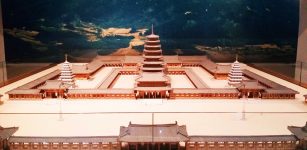 Mireuksa Pagoda: Largest And One Of The Oldest Of Korean Pagodas
Archaeology | Jan 1, 2016
Mireuksa Pagoda: Largest And One Of The Oldest Of Korean Pagodas
Archaeology | Jan 1, 2016 -
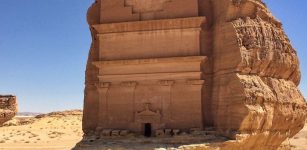 Mada’in Saleh: Magnificent Timeless Rock-Cut Tombs And Monuments In The Desert
Civilizations | Oct 30, 2018
Mada’in Saleh: Magnificent Timeless Rock-Cut Tombs And Monuments In The Desert
Civilizations | Oct 30, 2018 -
 Birds – Mysterious Avian Messengers That Symbolized Bridge Between Humans And Gods In World Beliefs
Myths & Legends | Aug 21, 2021
Birds – Mysterious Avian Messengers That Symbolized Bridge Between Humans And Gods In World Beliefs
Myths & Legends | Aug 21, 2021 -
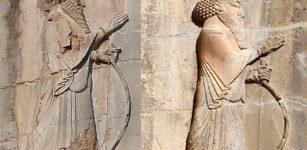 Naqsh-e Rostam: Spectacular Tomb Complex With Rock Reliefs From Elamite To Sasanian Times
Civilizations | Nov 15, 2018
Naqsh-e Rostam: Spectacular Tomb Complex With Rock Reliefs From Elamite To Sasanian Times
Civilizations | Nov 15, 2018 -
 Mystery Of The Bar Hill Comb Solved
Archaeology | Mar 13, 2023
Mystery Of The Bar Hill Comb Solved
Archaeology | Mar 13, 2023 -
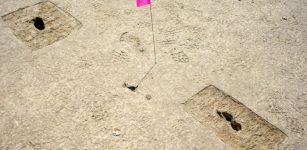 Surprising Discovery Of 88 Ice Age Human Footprints In Utah Desert
Archaeology | Jul 26, 2022
Surprising Discovery Of 88 Ice Age Human Footprints In Utah Desert
Archaeology | Jul 26, 2022 -
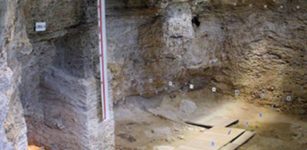 Abric Romaní Cave: New evidence indicates Neanderthals used to heat water some 60,000 years ago
Human Beginnings | Aug 31, 2015
Abric Romaní Cave: New evidence indicates Neanderthals used to heat water some 60,000 years ago
Human Beginnings | Aug 31, 2015 -
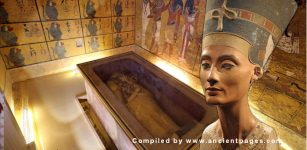 Discovery Of Queen Nefertiti’s Mummy Will Be Announced Next Month – Zahi Hawass Says
Archaeology | Sep 16, 2022
Discovery Of Queen Nefertiti’s Mummy Will Be Announced Next Month – Zahi Hawass Says
Archaeology | Sep 16, 2022 -
 Stone Age Hunter-Gatherers Were Far-Traveled To Find Tool Material In Striking Colors
Archaeology | Jul 14, 2025
Stone Age Hunter-Gatherers Were Far-Traveled To Find Tool Material In Striking Colors
Archaeology | Jul 14, 2025 -
 Ancient Suda: Massive Anonymous Byzantine-Greek Lexicon Dated To 10th Century
Featured Stories | Nov 6, 2018
Ancient Suda: Massive Anonymous Byzantine-Greek Lexicon Dated To 10th Century
Featured Stories | Nov 6, 2018 -
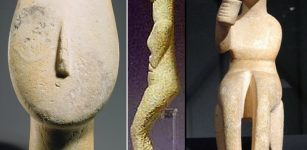 The Cyclades And Their Mysterious Society Lost In Time
Civilizations | Feb 4, 2016
The Cyclades And Their Mysterious Society Lost In Time
Civilizations | Feb 4, 2016 -
 Ancient Tools Found In Maryland Re-Write The History Of First Humans In America
Archaeology | May 29, 2024
Ancient Tools Found In Maryland Re-Write The History Of First Humans In America
Archaeology | May 29, 2024 -
 Incredible Ancient Machines Invented By Hero Of Alexandria – An Engineer Far Ahead Of His Time
Featured Stories | Jun 3, 2020
Incredible Ancient Machines Invented By Hero Of Alexandria – An Engineer Far Ahead Of His Time
Featured Stories | Jun 3, 2020



